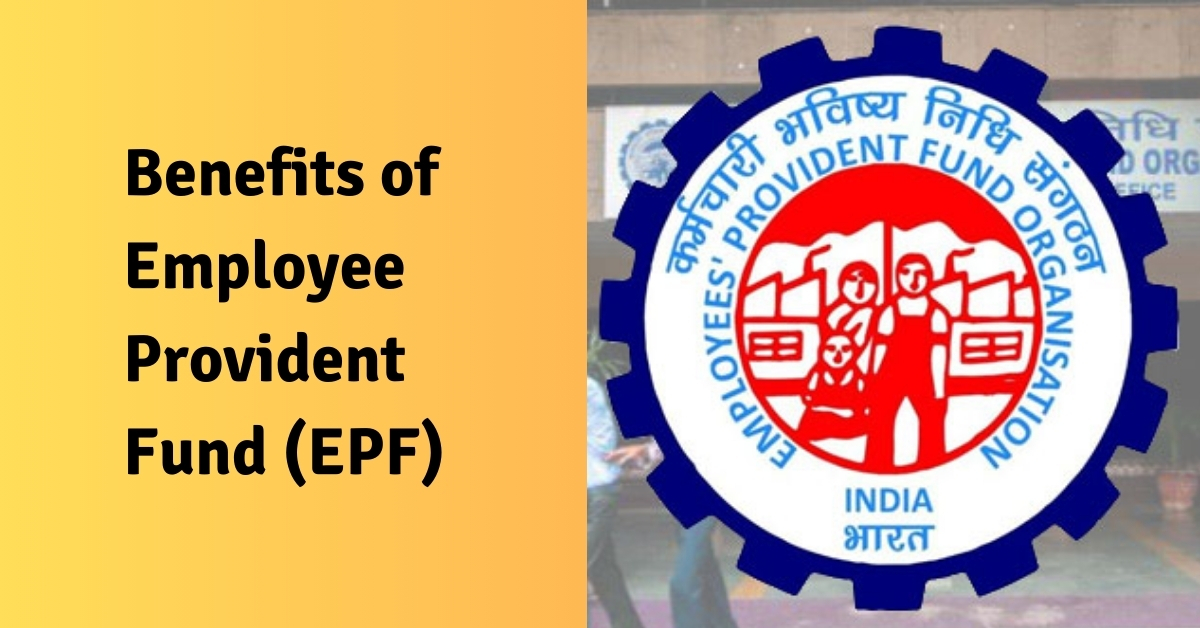Benefits of Employee Provident Fund (EPF)
In the landscape of employee benefits in India, the Employee Provident Fund (EPF) stands out as a cornerstone of financial security and long-term savings. Established under the Employees’ Provident Funds and Miscellaneous Provisions Act, 1952, the EPF scheme offers a range of benefits that make it an invaluable tool for employees’ financial planning. Let’s explore the numerous advantages that EPF brings to the table.
1. Forced Savings for Retirement
One of the primary benefits of EPF is its role as a forced savings mechanism. Every month, a portion of an employee’s salary (typically 12%) is automatically deducted and deposited into their EPF account, with an equal contribution made by the employer. This automatic deduction ensures that employees consistently save for their retirement, even if they might not have the discipline to do so voluntarily.
2. Tax Benefits
EPF contributions offer significant tax advantages under Section 80C of the Income Tax Act. The employee’s contribution to EPF is eligible for tax deduction up to Rs. 1.5 lakh per annum. Moreover, the interest earned on EPF and the final withdrawal amount are tax-free under certain conditions, making it a highly tax-efficient investment option.
3. Attractive Interest Rates
The EPF scheme offers interest rates that are often higher than what many bank fixed deposits provide. The interest rate is reviewed and declared by the government annually, taking into account the economic conditions. Historically, EPF interest rates have remained competitive, ensuring that employees’ savings grow at a healthy rate over time.
4. Employer Contribution
One of the most significant advantages of EPF is the mandatory contribution by the employer. This essentially amounts to additional income for the employee, boosting their overall savings. The employer’s contribution is not just a benefit but a legal obligation, ensuring that employees receive this additional financial support throughout their working years.
5. Loan Facility
EPF members can avail themselves of loans against their EPF balance for specific purposes such as home purchase, home construction, or to meet medical expenses. This facility provides financial flexibility to employees, allowing them to access funds for important life events without completely liquidating their savings.
6. Insurance Coverage
The EPF scheme comes with an additional benefit of life insurance coverage under the Employees’ Deposit Linked Insurance (EDLI) scheme. In the unfortunate event of an employee’s death during service, their nominees are eligible to receive a lump sum amount, providing crucial financial support to the family.
7. Portability
EPF accounts are portable, meaning employees can transfer their EPF balance when changing jobs. This feature ensures continuity in savings and prevents the hassle of managing multiple EPF accounts. The Universal Account Number (UAN) further simplifies this process, making it easier for employees to track and manage their EPF across different employers.
8. Partial Withdrawals for Specific Needs
The EPF scheme allows partial withdrawals for specific needs such as children’s education, marriage expenses, or medical treatments. This feature provides financial support during important life events without completely depleting the retirement corpus.
9. Online Access and Management
With the introduction of the EPF portal, managing EPF accounts has become more convenient. Employees can check their EPF balance, track contributions, and even apply for withdrawals online. This digital interface enhances transparency and ease of access to EPF-related information and services.
10. Retirement Benefits
Upon retirement, employees can withdraw the entire EPF amount, which often forms a substantial corpus. This lump sum can be crucial in meeting post-retirement financial needs or can be reinvested for a regular income stream.
11. Security of Investment
Being a government-backed scheme, EPF offers a high level of security for employees’ savings. The risk of capital loss is minimal, making it a safe investment option, especially for risk-averse individuals.
12. Compound Interest Benefits
The interest earned on EPF is compounded annually, leading to significant growth of the corpus over long periods. This compounding effect can result in a substantial increase in the final amount, especially for those who start contributing early in their careers.
13. Flexibility in Contribution
While there is a mandatory contribution, employees have the option to voluntarily contribute more to their EPF through the Voluntary Provident Fund (VPF). This flexibility allows employees to increase their savings based on their financial capacity and goals.
14. Support During Unemployment
In cases of unemployment, EPF provides a financial cushion. Members can withdraw up to 75% of their EPF balance after one month of unemployment, helping them manage their expenses during job transitions.
15. International Worker Benefits
For international workers in India, EPF offers benefits like the option to withdraw the full amount when leaving the country permanently, subject to certain conditions. This feature makes EPF relevant for expatriate employees as well.
Conclusion-
The Employee Provident Fund is more than just a savings scheme; it’s a comprehensive financial tool that offers multiple benefits to employees. From ensuring disciplined savings and providing tax benefits to offering financial security and flexibility, EPF plays a crucial role in an employee’s financial journey.
As you progress in your career, it’s essential to understand and maximize the benefits of your EPF. By viewing it as an integral part of your long-term financial planning, you can leverage EPF to build a secure financial future. Remember, the power of EPF lies not just in its immediate benefits but in its ability to create a substantial corpus over time, securing your financial well-being long after your working years are over.




